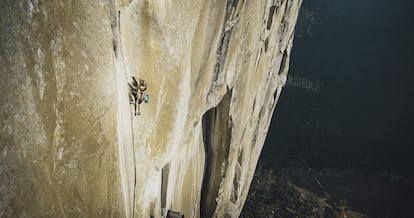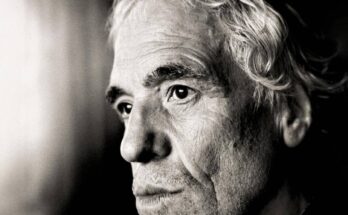On the same day that the death of Navarrese climber Iñaki Ochoa de Olza in Annapurna was announced, May 23, 2008, Emily Harrington was competing in the Dimarock International Climbing Master, in Bizkaia. The American climber, climbing star at 22 years old, world runner-up in 2005, saw how some of the interviews she was supposed to give that day had been cancelled: all the attention was focused on the disappearance of Ochoa de Olza. A few months later, Harrington slowly began to separate herself from the competition, overcoming a complicated relationship with her body weight and becoming a big wall climber, even a mountaineer. No one could have imagined it in 2008. The little girl who, at just ten years old, asked for ropes and harnesses at Christmas, the same one who became a five-time national climbing champion, turned towards the mountain: “I had already done everything I was capable of doing in the world of competitions”, she said.
In 2012 it was planted on the summit of Everest (8,848 m), with the help of artificial oxygen, causing enormous surprise in the specialized media. By then she had already started ice and mixed climbing, a transformation that would also take her to Ama Dablam (6,812m) in 2013 and to climb and ski Cho Oyu (8,201m) in 2016, with her partner Adrian Ballinger. His record change finally led him towards a type of climbing that not everyone is capable of: self-protection on large walls without fixed insurance. Those of Yosemite Valley, and especially El Capitan, became his new playground, a new form of obsession.
In 2015, he spent six days on the road golden gate of the Captain until he completed his 41 free pitches, 950 meters of vertical granite and with difficulties up to 8 a. She was the second woman to achieve this, after Hazel Findlay (2011)… but she soon wanted more. Only three men had managed to free climb that day golden gate: Tommy Caldwell, Brad Gobright and Alex Honnold, and Emily Harrington decided to be the first lady. He got Honnold to reassure him and got to work. After two failed attempts, in 2019, stronger and more motivated than ever, she returned. He started climbing in the middle of the night, by the light of his headlamp, on easy terrain, while Honnold was belaying him at the foot of the wall. A scream altered the routine of the cold night. Then came the cries of pain and the contorted face of Honnold, terrified but without losing his calm: he managed to climb towards his partner, stabilize her, protect her spine and wait without leaving her side for a complex rescue. In the documentary, the darkness of the night prevents us from seeing Harrington, but his muffled screams and Honnold’s wild gaze convey far more anguish than any daytime shot. Harrington suffered multiple injuries, including head trauma. Afterwards, he had to go through a long process of regaining his lost confidence and shaking off his demons. During her recovery, those who years ago criticized her for her thinness now pointed out that she was supposedly overweight, noting in passing that she would never be able to match men in such a challenge.
The documentary climber girl It will be visible this Friday 21 November as part of the programming of the BBVA Torelló mountain film festival and will also be shown to the public at the BBK Mendi Film Festival in Bilbao on 13 December. The film, released last September and highly acclaimed by critics, immerses itself without filters in issues that the climbing community usually avoids, questioning the coherence of certain obsessions, resilience or the real role of women in the world of climbing. The film crew followed the climber from her first conversations with Honnold, who this time put the spotlight on her friend, and finished filming years later, when Harrington became a mother. A very long, extremely accurate work, which has the merit of providing moments of unique intensity, such as that shot in which, one step away from realizing her dream, the American climber falls, hits her head, being knocked out (why isn’t she wearing a helmet?) and everything seems to collapse definitively.
Her conversations with Honnold are also sincere: her challenge is not an exclusively female issue of empowerment: it concerns friendship, the emphasis is placed on the value of the mixed team, a vital adventure is at stake which the protagonist does not know whether she will be able to face with guarantees or not. And it is not difficult for her to reveal her weaknesses, the need to reach the best possible version of herself in order to measure herself. It is the project of his life, perhaps because he knows that his existence will then be different, that the great opportunities will be behind him. When he finally managed to free climb in 2020 golden gate That day, the general press in the United States focused on the news: they had a new heroin profile, something Harrington was quick to deny: “I think above all I learned to fail. To deal with uncertainty and effort and the real possibility of working on something that maybe I would never be able to complete. But I gave myself space to, maybe, succeed.”

Now 39, and with a son born in 2023, Harrington lives a peaceful life, with challenges on a smaller scale. In 2019 she got an affirmative answer to a question that kept her up at night: was she really a climber capable of tackling the walls of Yosemite, or was she just a pretentious young woman infatuated with too much of a challenge? The need to be accepted in the local community of legends of the Californian valley allowed her to reach her best version, to break out of the mold in which she had been pigeonholed in adolescence to look for another place in which to reinvent herself.



